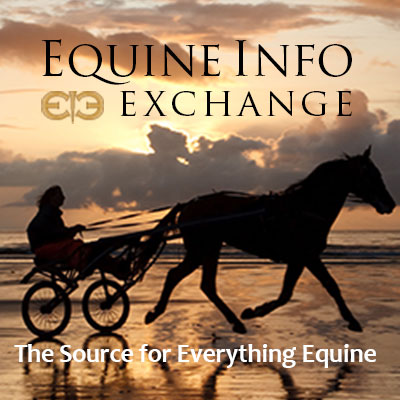Recreation & Lifestyle
Welcome to Recreation & Lifestyle, which includes leisure riding and other aspects of the equestrian lifestyle for you and your horse loving friends and family.
Looking for the perfect present? See the Gifts & Jewelry section. Redecorating? Find a Painting, Photograph or Sculpture in the Artwork section. Need to check out a movie or crawl up with a good book or magazine? See our Entertainment section where you will find and Books, Movies, Games, and Magazines. And don't forget about Fine Art in some specialty Museums that might surprise you.
Looking for love or a trail buddy? Riding Partners is the spot to seek other riders who share your passion. Find a place to ride with that special person in our Trail Riding section and if you need more time away, take a look at Vacations. Want to know about the next horse show or special event? Don’t miss it! Dates and locations are included in the Calendar of Events for Recreation & Lifestyle.
Do we need to add more? Please use the useful feedback link and let us know!

By the EIE Editorial Staff
A long-time equestrian remembered her first time picking up a mallet in Florida for her first polo lesson. Galloping down an immaculately groomed field on a well-trained pony with the Argentine pro was a thrill – and she knew she found her favorite sport. Quickly hooked, she developed her skills and spent her spare time going to the fields to “stick and ball,” while meeting other players who shared her thrill when they found polo
There are many reasons why polo can be so much fun to play, despite its challenges and risks. Here are some of the key factors.
Thrill and Excitement
- Fast-paced action: Polo is a dynamic and fast-paced sport, with players galloping across the field and hitting the ball at high speeds. This can be incredibly exhilarating and provide a real adrenaline rush.
- Competition and strategy: While polo requires individual skill, it's a team sport, and strategizing together and working towards a common goal with your teammates adds another layer of excitement.
- Unpredictability: The fast pace and the involvement of animals make every game unique and unpredictable. You never know what might happen next, keeping you on the edge of your seat.
Challenge and Mastery
- Physical and mental demands: Polo requires a combination of athleticism, coordination, horsemanship, and strategic thinking. Mastering these skills and improving your game can be very rewarding.
- Horse-human connection: Building a strong bond with your polo pony and learning to communicate with it effectively is a unique and satisfying experience.
- Constant learning: Even the most experienced polo players are always learning new things and refining their skills. The constant challenge to improve can keep you motivated and engaged.
Social and Community Aspect
- Camaraderie and sportsmanship: Polo fosters a strong sense of camaraderie among players, both teammates and opponents. The shared love of the sport and the respect for each other's skills create a strong community.
- Social events and traditions: Polo is often associated with social events and traditions, such as post-game gatherings and divot stomping, which adds to the fun and social aspect of the sport.
- Unique lifestyle: Participating in polo can open doors to a unique lifestyle filled with beautiful horses, stunning settings, and exciting events.
Overall, polo is a demanding and potentially dangerous sport, but it's also incredibly rewarding for those who embrace the challenge and appreciate the unique combination of skill, strategy, and excitement that it offers. The thrill of the game, the connection with horses, the camaraderie among players, and the constant opportunity for learning and improvement all contribute to making polo a truly fun and unforgettable experience.
Interested in playing polo or attending a match? Check out our POLO page and enjoy!
You can find more interesting stories in our section on Recreation & Lifestyle.
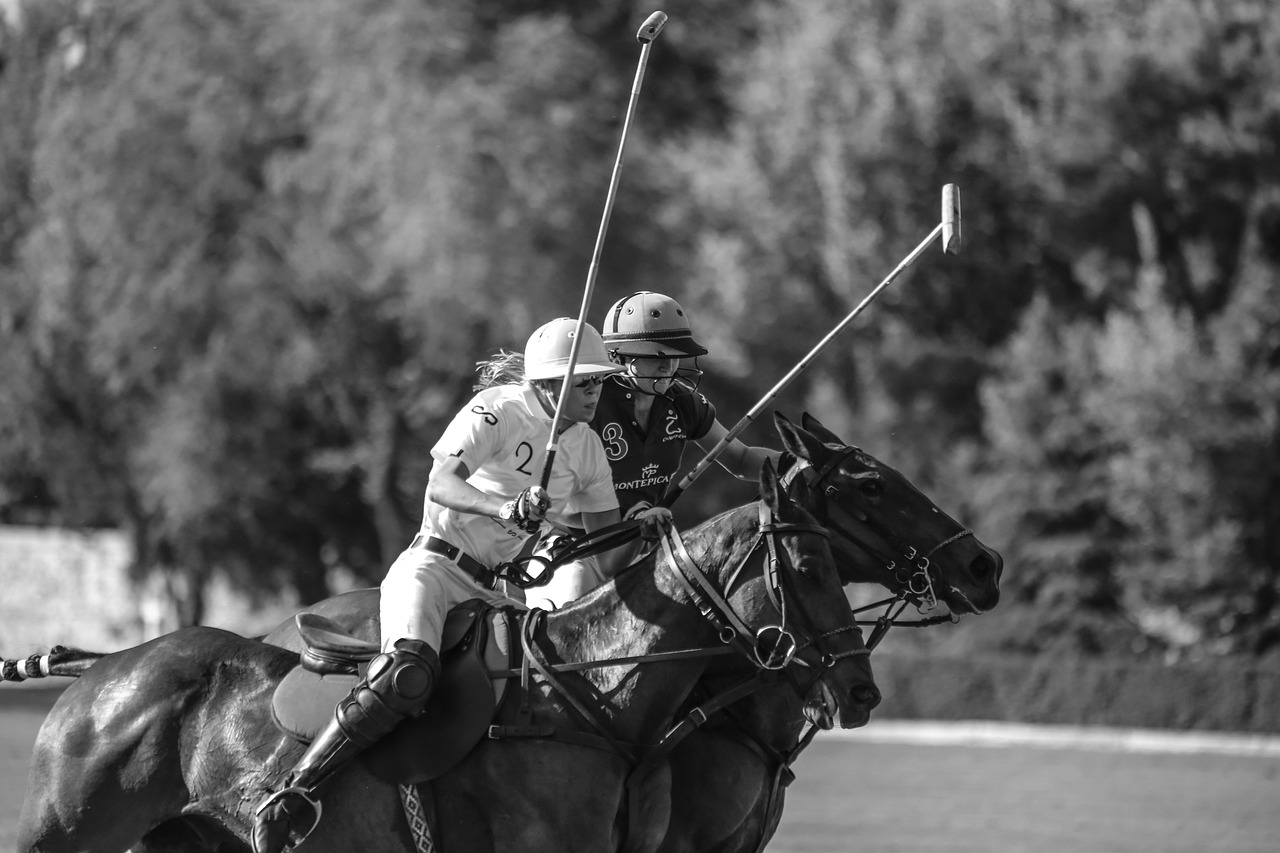
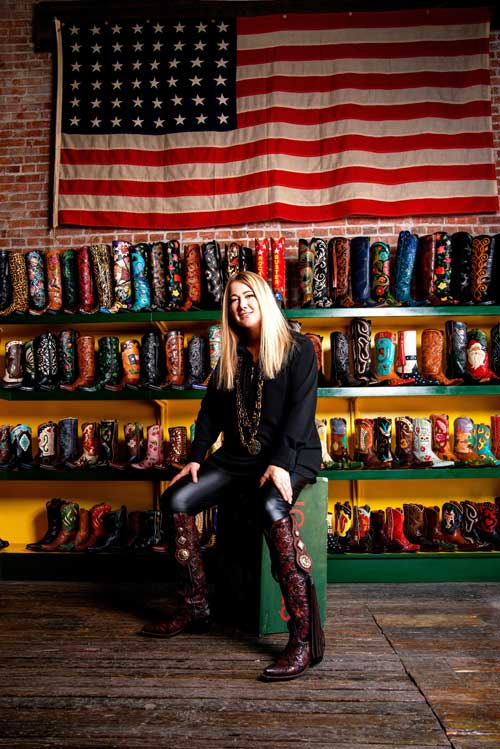
By Nevena Christi
The Not-So-Coy Fish Boot has a funny story. The bar next door started having very loud music every weekend and I couldn’t sleep! There is never time to make Boss Lady Boots at work, so I decided I would make my own boots at home. I got myself a pair of noise cancelling headphones and snacks, because if you are gonna be up ‘til 3am, why not have a little fun? In five weeks, or what would have been five hellish weekends, I came into the shop with completed flat pieces of my boots. My employees laughed, “Fish boots?! Ha-Ha!” They didn’t understand my love of Japanese art. So I basically said, “Let’s just do it and do it with a high heel!”
When they were done, I took them on their maiden voyage to New York where I was approached at a restaurant by one of the editors of Vogue and asked, “Where did you get your fabulous boots from?” Because of those boots, Vogue did a story on our boots and I got compliments wherever I went.
When I returned home, I rejoiced that the Fish Boots the guys laughed at were the same boots that were the talk of the town. Our customers think of our boots as big pieces of jewelry. They are wearable art and they are a great conversation piece. You never know who you are going to meet in your Rocketbusters!
You can find Rocketbuster Boots in our section on Riding Apparel Boots.
This article originally appeared on ShopTalk! Magazine and is published here with permission.
There are more interesting articles in our section on Recreation & Lifestyle.
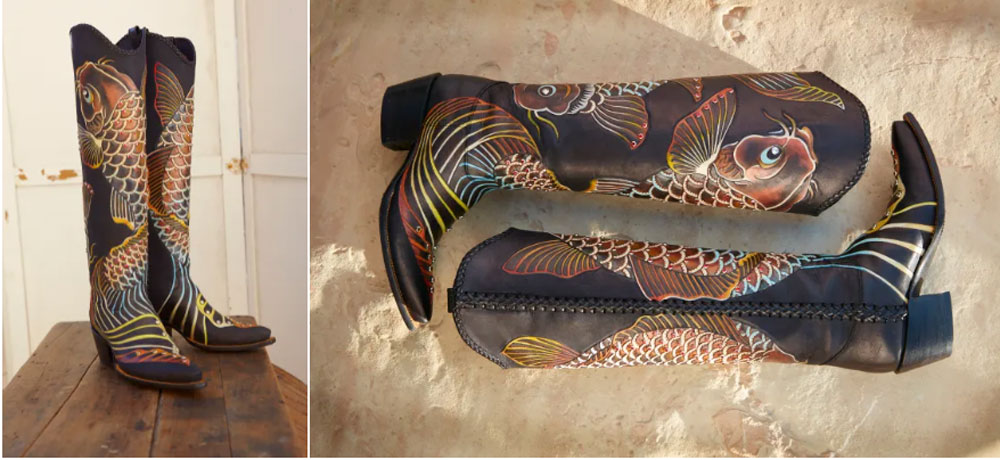
Planning a visit to the Kentucky Horse Park soon? This short video will help you plan your day and guide you through the Park. For full details including showtimes and admission visit them at www.kyhorsepark.com
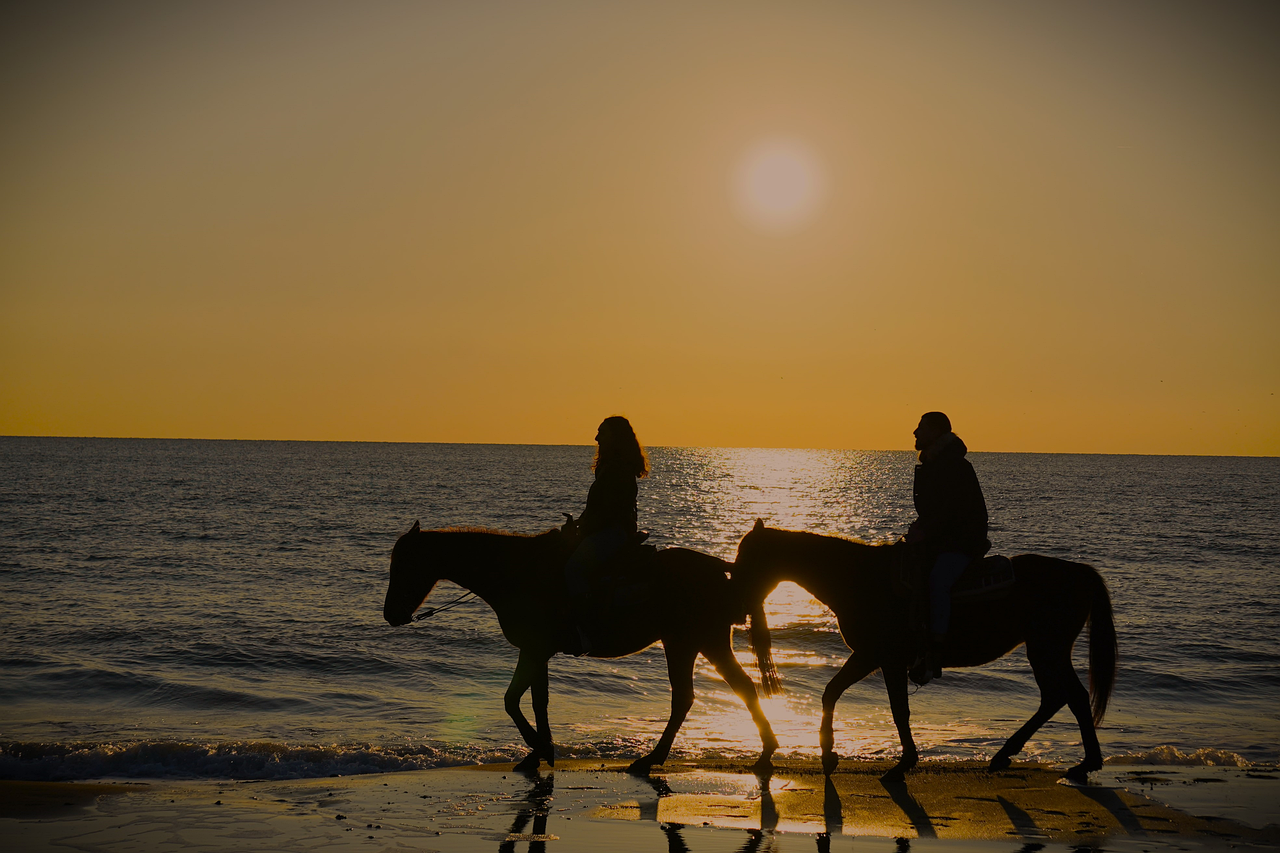
By the EIE Editorial Staff
The good news is that equestrian activities can be enjoyed equally by everyone. In fact, equestrian events are the only Olympic events where men and women compete directly against each other equally. This includes dressage, eventing and show jumping. There are no separate men's or women's divisions as the competitions are simply open to everyone!
The landscape of LGBTQ+ friendliness in the equestrian world is complex and multifaceted. There are promising signs of inclusivity, but also room for improvement and ongoing challenges. Here's a nuanced perspective.
Positive points
- Gender neutrality: Equestrian is one of the few sports where competition isn't segregated by gender. Men and women compete head-to-head at all levels, creating a naturally more inclusive environment.
- Strong community: Many within the equestrian community are known for their welcoming and supportive nature. Shared passion for horses often transcends other differences, fostering a sense of camaraderie.
- Visible LGBTQ+ presence: Prominent LGBTQ+ Olympians and professionals in the sport, like Carl Hester and Robert Dover, contribute to normalization and acceptance.
Challenges and areas for improvement
- Rurality: The predominantly rural nature of equestrianism can expose LGBTQ+ individuals to rigid attitudes and limited diversity.
- Visibility: While acceptance is growing, LGBTQ+ riders may still face subtle prejudice or feel pressure to downplay their identities.
- Bullying and harassment: Incidents of discrimination and bullying, though isolated, are still reported within the community.
While the equestrian world offers considerable promise for LGBTQ+ individuals, it's not without its challenges. Continued efforts towards education, inclusivity, and combating discrimination are necessary to create a truly welcoming environment for all.
It’s not accurate to label entire equestrian disciplines as definitively "more" or "less" LGBTQ+ friendly. Each discipline, and indeed each individual barn or riding center within those disciplines, can vary greatly in their level of inclusivity and welcoming atmosphere.
However, there are some trends and resources that can help you find LGBTQ+ friendly equestrian environments.
Promising indicators
- Organizations and initiatives: Look for barns or riding centers involved with organizations like Equestrian Pride or Horse Equality that actively promote LGBTQ+ inclusion within the equestrian community.
- Visible diversity: While not foolproof, noticing diverse riders and instructors at a barn can be a positive sign of an inclusive environment.
- Open communication: Don't hesitate to directly ask about a barn's policies and commitment to inclusivity. A welcoming barn will be happy to answer your questions honestly.
Additional resources
- LGBTQ+ equestrian communities: Online groups and forums can connect you with other LGBTQ+ riders and offer valuable insights into specific barns or disciplines.
- Recommendations and reviews: Ask fellow riders, trainers, or local tack shops for recommendations of inclusive barns or riding centers. Online reviews can also offer clues about a barn's atmosphere.
Ultimately, the best way to find an LGBTQ+ friendly equestrian environment is to trust your gut and seek out places that feel welcoming and respectful. Remember, you deserve to feel comfortable and supported while pursuing your passion for horses.
Here are some additional tips for creating a safe and inclusive space for yourself in any equestrian setting:
- Be open and authentic about yourself.
- Speak up if you experience any discrimination or harassment.
- Support other LGBTQ+ riders and allies.
- Advocate for inclusivity within the equestrian community.
Remember, fostering a welcoming and respectful environment for everyone is what truly matters, and you can play a role in making the equestrian world more inclusive for LGBTQ+ individuals.
You can find more interesting stories in our section on Recreation & Lifestyle.

By the EIE Editorial Staff
Today, there are over 400 recognized horse breeds in the world. Each breed has its own unique characteristics and abilities. This diversity of breeds allows people to choose the perfect horse for their individual needs and interests.
First, it's important to understand that the terms "hot-blooded," "warm-blooded," and "cold-blooded" in the context of horses don't refer to their actual body temperature, as all horses are mammals and naturally warm-blooded. Instead, these terms are informal designations used to group different breeds based on their temperament and physical characteristics.
Here's a breakdown.
Hot-blooded horses
- Characteristics: Energetic, spirited, athletic, sensitive, often high-strung.
- Breeds: Arabian, Thoroughbred, Akhal-Teke.
- Examples: Racehorses, show horses, endurance horses.
Warm-blooded horses
- Characteristics: Combine athleticism of hot-blooded horses with the calmness and strength of cold-blooded horses.
- Breeds: Hanoverian, Dutch Warmblood, Holsteiner, Trakehner.
- Examples: Dressage horses, show jumping horses, eventing horses.
Cold-blooded horses
It's important to remember that these are generalizations, and individual horses within each category can vary in temperament and personality. There are also many other breeds that don't neatly fit into these categories.
Here are some additional things to keep in mind:
- The terms "hot-blooded" and "cold-blooded" are not widely used in scientific literature.
- The origins of these terms are not entirely clear, but they likely arose from comparisons of different horse breeds in terms of their energy levels and suitability for different purposes.
- Some newer and mixed breeds defy these traditional classifications, blurring the lines between hot-blooded, warm-blooded, and cold-blooded horses.
The development of the large number of breeds is due to many factors, including:
- Geography: Horses were first domesticated in Central Asia, but they quickly spread to all corners of the globe. As horses adapted to different climates and terrains, their physical characteristics began to diverge. This led to the development of different breeds of horses in different parts of the world.
- Human use: Humans have bred horses for a variety of purposes, including transportation, warfare, agriculture, and sport. This has led to the development of breeds that are specialized for different tasks. For example, draft horses are bred for strength, while racehorses are bred for speed.
- Personal preference: People have different preferences when it comes to horses. Some people prefer horses of a certain size, color, or temperament. This has led to the development of breeds that appeal to different people's tastes.
The diversity of horse breeds is a testament to the adaptability and versatility of the horse. Horses have played an important role in human history for centuries, and they continue to be valued companions as emotional support animals and working animals today. There is a horse for every type of rider at every level for every interest. Horses are as individual as we are and when chosen wisely, can make wonderful partners!
You can find more interesting stories in our section on Recreation & Lifestyle.
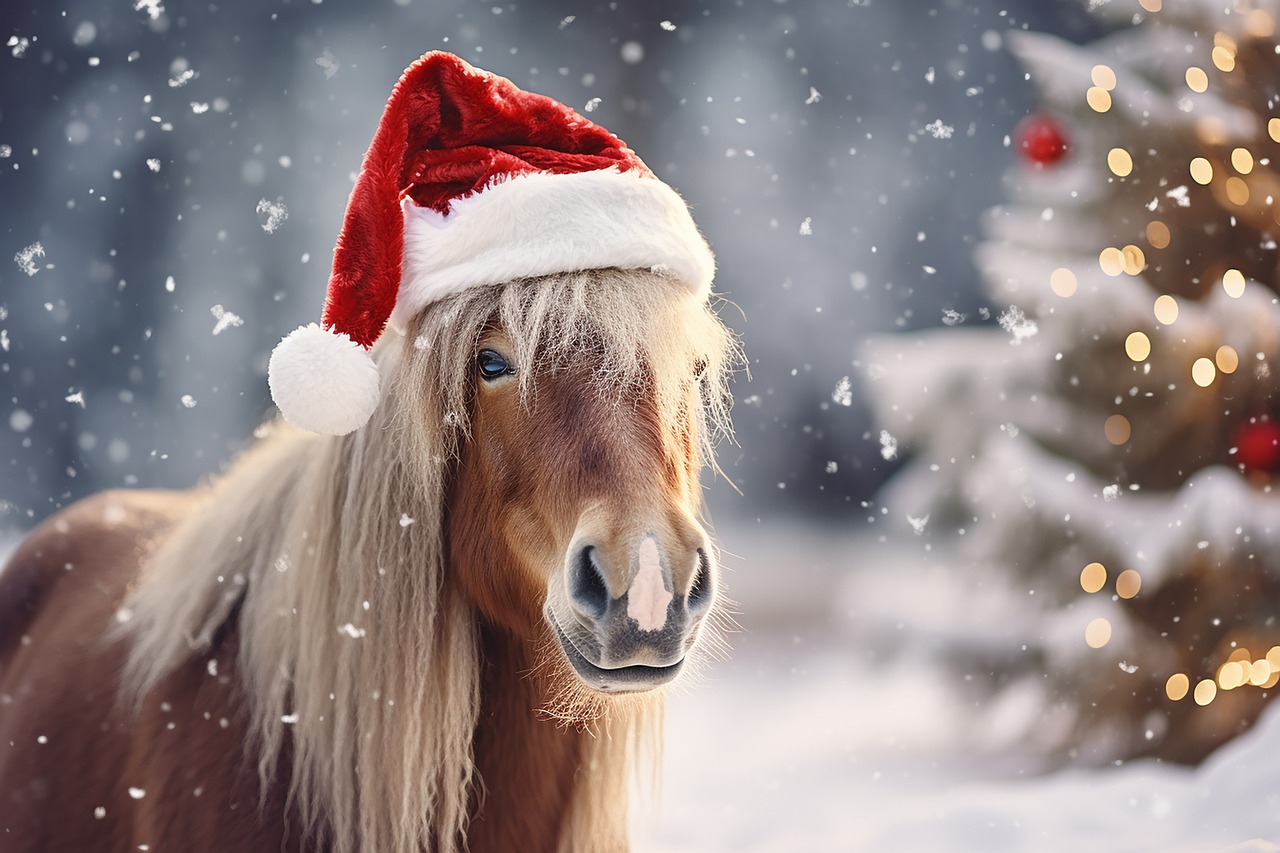
By the EIE Editorial Staff
The holidays can be a myriad of mixed emotions for many of us. While joyful traditions abound, stress, loneliness, and emotional strain can also come along for the ride. It's in these moments that horses can become unexpected allies, offering unique ways to navigate the holiday season's ups and downs. Here are some ways horses can help us cope.
Comfort and Companionship
- Non-judgmental presence: Horses offer a sanctuary of unconditional acceptance. Just spending time with them, grooming, or quietly sharing their company can be incredibly calming and grounding.
- Mindfulness in motion: Activities like trail riding or even grooming require focus and presence in the moment, taking our minds off worries and letting us appreciate the simple act of being with another creature.
- Physical touch and connection: Stroking a horse's soft coat or feeling their steady rhythm during a ride can trigger the release of oxytocin, a hormone associated with bonding and relaxation.
Stress Reduction and Grounding
- Physical activity: Spending time caring for horses or riding can be a great way to burn off holiday stresses and pent-up energy. Fresh air and exercise also boost endorphins, our natural mood elevators.
- Mindfulness practice: Activities like meditating with horses or simply observing their calm presence can be powerful tools for practicing mindfulness and reducing anxiety. Horses' natural rhythm and focus on the present moment can guide us to do the same.
- Nature connection: Being around horses puts us in touch with the natural world, offering a sense of peace and perspective that can be particularly valuable during busy holiday seasons.
Therapeutic Support
- Equine therapy: For those struggling with anxiety, depression, or other mental health challenges, equine therapy can offer a unique and powerful form of support. Working with horses in a therapeutic setting can build self-esteem, improve communication skills, and promote emotional well-being.
- Volunteer opportunities: Spending time caring for horses at rehoming centers or therapeutic riding programs can be a meaningful way to give back to the community and find purpose during the holidays.
Of course, the way horses help us cope is as individual as the bonds we build with them. But whether it's through their quiet companionship, the joy of riding, or the therapeutic benefits of equine programs, horses can undoubtedly add a unique and positive dimension to our holiday experience.
So, if you're feeling overwhelmed or disconnected this holiday season, consider reaching out to a horse friend. You might be surprised at the solace and support they can offer.
You can find more interesting stories in our section on Recreation & Lifestyle.
- Can Horses Bring Your Joy in 2024? You Bet they Can and Here's How!
- Say Aloha to a Horse Vacation in Hawaii!
- Have a Horse-Themed Holiday!
- Single and Dating? Married and Looking for New Activity Ideas? Horses can Help!
- The 8 Things to Consider when Traveling Without Your Horse!
- Is it Getting Cold Near You? How About a Horse Holiday to Sunny Florida!
- Hurting for the Holidays? Horses Can Help!
- Stuck for Holiday Gift Ideas for Your Favorite Horse Lover? We’ve Got You Covered!
- Heather Wallace at Equine Affaire 2023 - New Book!!
- Equine Affaire 2023!








